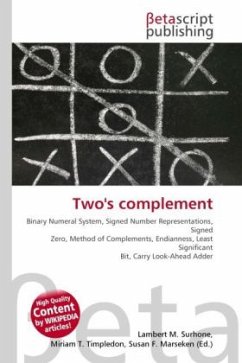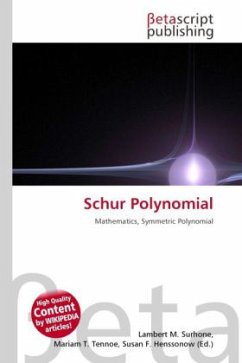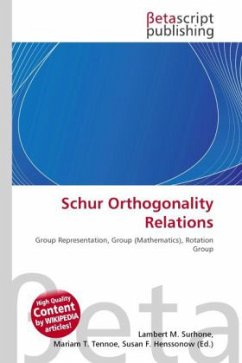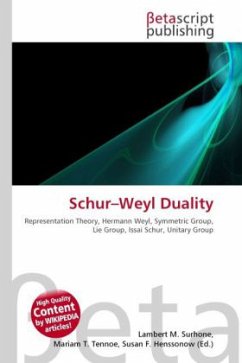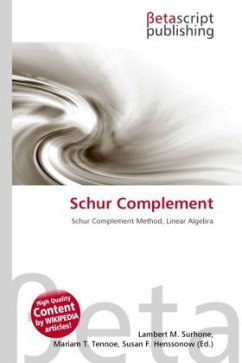
Schur Complement
Versandkostenfrei!
Versandfertig in 6-10 Tagen
23,99 €
inkl. MwSt.

PAYBACK Punkte
12 °P sammeln!
High Quality Content by WIKIPEDIA articles! In linear algebra and the theory of matrices, the Schur complement of a matrix block (i.e., a submatrix within a larger matrix) is defined as follows. Suppose A, B, C, D are respectively p×p, p×q, q×p and q×q matrices, and D is invertible. It is named after Issai Schur who used it to prove Schur's lemma, although it had been used previously. In numerical analysis, the Schur complement method is the basic and the earliest version of non-overlapping domain decomposition method, also called iterative substructuring. A finite element problem is split...
High Quality Content by WIKIPEDIA articles! In linear algebra and the theory of matrices, the Schur complement of a matrix block (i.e., a submatrix within a larger matrix) is defined as follows. Suppose A, B, C, D are respectively p×p, p×q, q×p and q×q matrices, and D is invertible. It is named after Issai Schur who used it to prove Schur's lemma, although it had been used previously. In numerical analysis, the Schur complement method is the basic and the earliest version of non-overlapping domain decomposition method, also called iterative substructuring. A finite element problem is split into non-overlapping subdomains, and the unknowns in the interiors of the subdomains are eliminated. The remaining Schur complement system on the unknowns associated with subdomain interfaces is solved by the conjugate gradient method.








